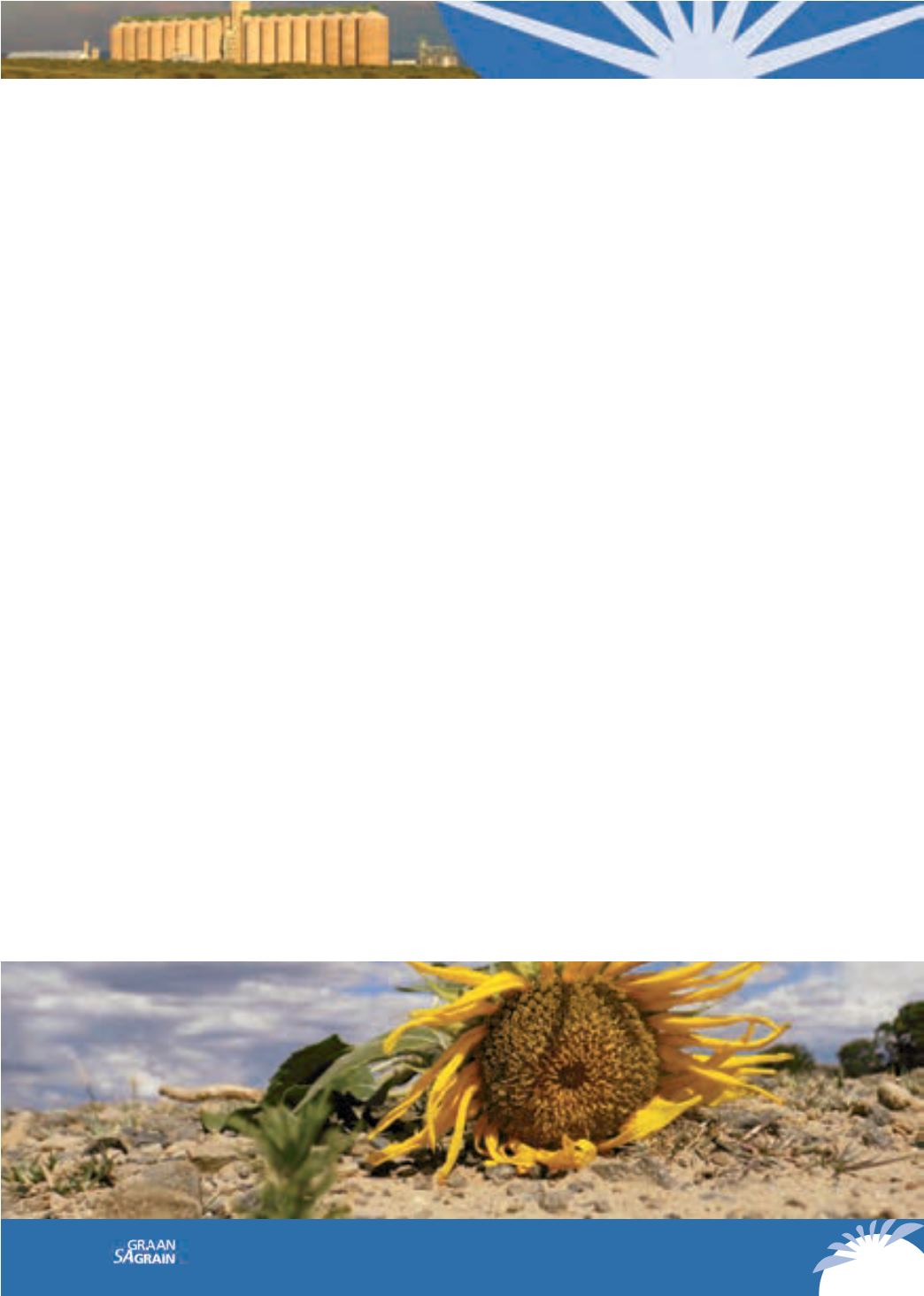

15
GRAANGIDS
2017
GRAIN GUIDE
•
Increase organic soil surface cover.
Retained crop residues, in time, are a major contributor
to increased SOM levels. With heavier rainfall, the increase in soil cover will help to increase
infiltration rates, prevent water runoff, soil erosion, loss of valuable nutrients and loss of water
through evaporation. Surface cover also buffers the soil against temperature extremes. Genera-
tion of adequate biomass (>6 t ha
-1
yr
-1
crop residues or at least 70% ground cover) and vigor-
ous root development are crucial to adequately cover the soil surface and re-build SOM. Up
to 70% of soil water could be lost from bare soil through evaporation only.
•
Using ‘cover crops’ to ensure year-round soil cover for protection against wind and water
erosion.
These cover crops may be grown in the ‘off season’ between major cash crops to hold
and protect soil and build SOM, biological diversity and soil structure for the benefit of subse-
quent ‘cash’ crops. Additionally, cover crops may be sown with cash crops such as maize (e.g.
through relay- or intercropping), to provide year round soil protection of what is commonly bare
soil, provide a ‘catch crop’ to capture rainwater, reduce water runoff and maximise infiltration;
as well as enrich the topsoil through increased SOM and nutrient cycling. Careful selection,
timing and management of the cover crop ensures minimal competition for stores of soil
moisture between the cash and cover crops, and the selection of Nitrogen-fixing crops (grass/
legume pastures) may help enhance soil fertility and subsequent yields of the main cash crop.
Incorporate drought tolerant crops or cultivars into the cropping system where possible.
•
Diversify and lengthen cropping systems that enhance the build-up of SOM and soil struc-
ture.
Longer crop rotations or long-term (perennial) ley cropping and the use of shrubs and
trees can also help break up pest and weed cycles, thereby reducing input costs and enhanc-
ing the soil’s productive capacity. Utilising these crops with an ultra-high stock density grazing
system has proven to be a very effective tool to accelerate the build-up of SOM.
•
Consider biological ameliorants such as biochar to improve soil health.
Biochar is a
charcoal by-product created by burning biomass at slow and low heat. Appropriate biological
ameliorants could have a number of benefits as a soil amendment, including improving nutrient
adsorption and availability, improved habitat for soil microbes, soil tilth and improved soil
water holding capacity. In addition, it is a means of sequestering carbon into the soil.
•
Engage in irrigation practices that improve water-use efficiency.
In many regions that
already rely on irrigation, the climate is expected to become drier and create new demand for
water-saving irrigation practices. In addition to conducting regular maintenance and audits on
existing systems, many producers are recycling water, changing to drip systems and using pre-
cision irrigation to target specific areas of their fields with the exact amount of water needed.
Climate change poses real and substantial challenges for agriculture globally – challenges that
the status quo is unlikely to meet. Effective adaptation management strategies offer the agriculture
sector ways to manage risk and increase production while simultaneously improving soil, water,
air quality, and biodiversity.
CA is a fundamental change in doing agriculture – it is NOT business as usual. Correctly applied
CA is the core of a climate smart agriculture (CSA) – it can be complemented and combined with
Continued on p. 17

















